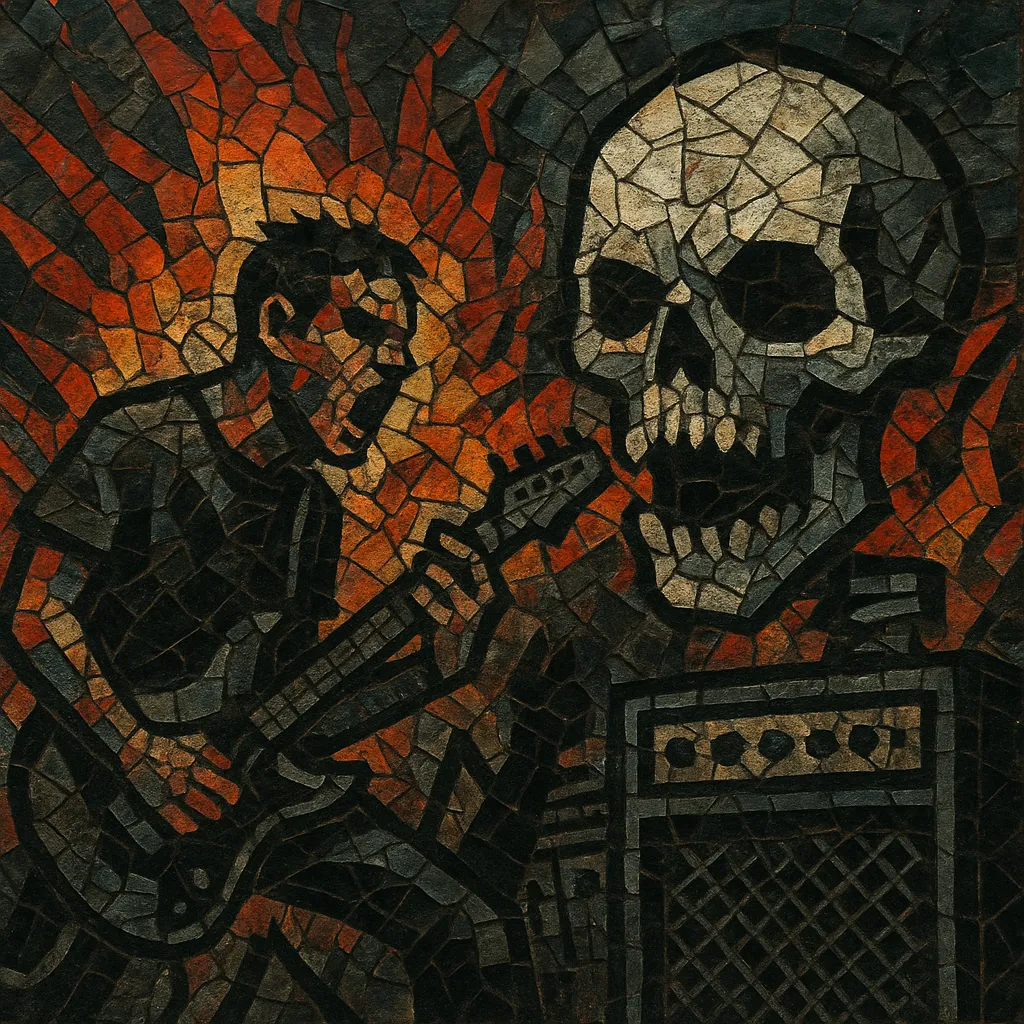Digital hardcore is a high‑intensity fusion of hardcore punk’s speed and confrontation with the distorted, overdriven sonics of hardcore techno, gabber, and breakbeat.
It is typically characterized by clipped and bit‑crushed drums, blown‑out 909/amen breaks, harsh noise layers, shouted anti‑authoritarian vocals, and an aesthetic rooted in DIY punk and rave culture.
The style favors saturation, extreme dynamic compression, sudden structural cuts, and political urgency over harmonic complexity, often resulting in a cathartic, chaotic wall of sound.
Digital hardcore emerged in early 1990s Berlin, as post‑Wall punk radicalism collided with the city’s nascent hardcore techno and gabber scenes. Artists connected to the label Digital Hardcore Recordings (DHR), founded by Alec Empire, fused breakbeats, punk aggression, and industrial noise into a new, confrontational sound. Atari Teenage Riot (formed 1992) became the genre’s flagship group, crystallizing a template of frantic tempos, saturated drums, and explicitly political, anti‑fascist lyrics.
Between roughly 1994 and 1999, DHR and allied acts (EC8OR, Hanin Elias, Sonic Subjunkies, Shizuo, Bomb20) codified the style across EPs, compilations, and explosive live shows. The sound borrowed from gabber’s relentless kick energy, jungle’s breakbeat science, and industrial’s abrasion, while preserving punk’s DIY spirit and direct action ethos. Internationally, sympathetic artists and scenes in Japan, the UK, and the US adopted and adapted the approach; The Mad Capsule Markets, for example, pulled the aesthetic toward a metal‑leaning crossover.
After the late‑1990s peak, DHR’s activity slowed, but the genre’s DNA permeated adjacent styles. Breakcore, electronicore, and later punk‑rap/trap‑metal hybrids absorbed digital hardcore’s tactics: brickwalled drums, extreme distortion, and shouted, agitational delivery. A 2010s/2020s underground resurgence—bolstered by internet‑native scenes—saw new artists blend digital hardcore with noise rap, footwork, and hyper‑compressed club sonics, reaffirming its relevance as a vehicle for protest and catharsis.
Beyond sound design, digital hardcore foregrounds anti‑authoritarian politics, anti‑racism, and anti‑fascism. Live, it channels punk show intensity and rave unpredictability; on record, it prioritizes immediacy, impact, and sonic maximalism over conventional fidelity.


